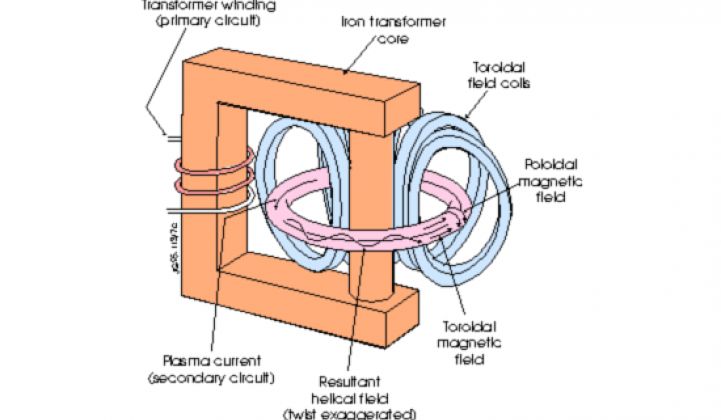Researchers at MIT have completed an experiment that indicates that fusion power – a clean form of nuclear power that's been dreamed about for years – could move step closer to reality with the help of radio waves.
Fusion reactors produce power by changing the underlying structure of atoms inside their donut-shaped chamber. Mix deuterium and tritium (two heavy isotopes of hydrogen), raise the temperature to 100 million Celsius, and you get helium, spare neutrons and abundant amounts of energy. The high heat in the reactor helps turn the atoms into a plasma, a prerequisite.
If the plasma touches the walls of the reactor, however, it cools off and so does any hope of a fusion reaction. Using the university's shaped Alcator C-Mod fusion reactor (the oldest in the world) physicist Yijun Lin and principal research scientist John Rice used radio waves to propel the plasma inside the dount-shaped chamber without hitting the walls. The radio waves also prevented the plasma from causing turbulence, which can interfere with fusion reactions.
Various scientists have tried different variations of fuel mixture, frequency of the radio waves and other parameters. "Finally, the conditions were just right," said Rice in a prepared statement.
A small group of startups – General Fusion, Tri-Alpha Energy – have received venture funds in the past few years to see if fusion power will be possible on a commercial scale. General Fusion hopes to one day build 50 megawatt plants for $100 million. Some fusion proponents say that the practicality of fusion could be proven in three to five years. Fusion plants would produce no carbon emissions and wouldn't come with the environmental hazards of nuclear fission plants. Still, there's that problem of actually getting this stuff to work outside of the rarefied atmosphere of a lab.
The two discussed their results at the Plasma Physics Divisional meeting of the American Physical Society held in November and will publish more data in Physical Review Letter on December 5.
At the conference, other scientists proposed solutions for other problems in dealing with the hot plasma. The plasma, in some circumstances, can release electron beams that can damage a reactor's walls. To prevent that, argon or neon gas can be inserted, which causes the plasma to turn into light. The light is the equivalent of a billion watt light bulb but the flash lasts for only a thousandth of a second.
Fission, of course, remains the mainstay of the nuclear power industry. Approximately 30 applications for nuclear power reactor are expected to be filed in the U.S. over the next few years. A plant hasn't been built in the U.S. since the 1970s. Innovation is taking place on the fission side as well. Hyperion Power Generation, has crafted a hot-tub sized reactor that can provide 27 megawatts of electricity or 70 megawatt-equivalents of heat. The company, which grew out of experiments at Los Alamos National Labs, is seeking $10 million in funding.
Hyperion plans to plant its generators, which get buried underground in cement bunkers, at military bases, not residential communities, says vice president of public policy Deborah Blackwell.



